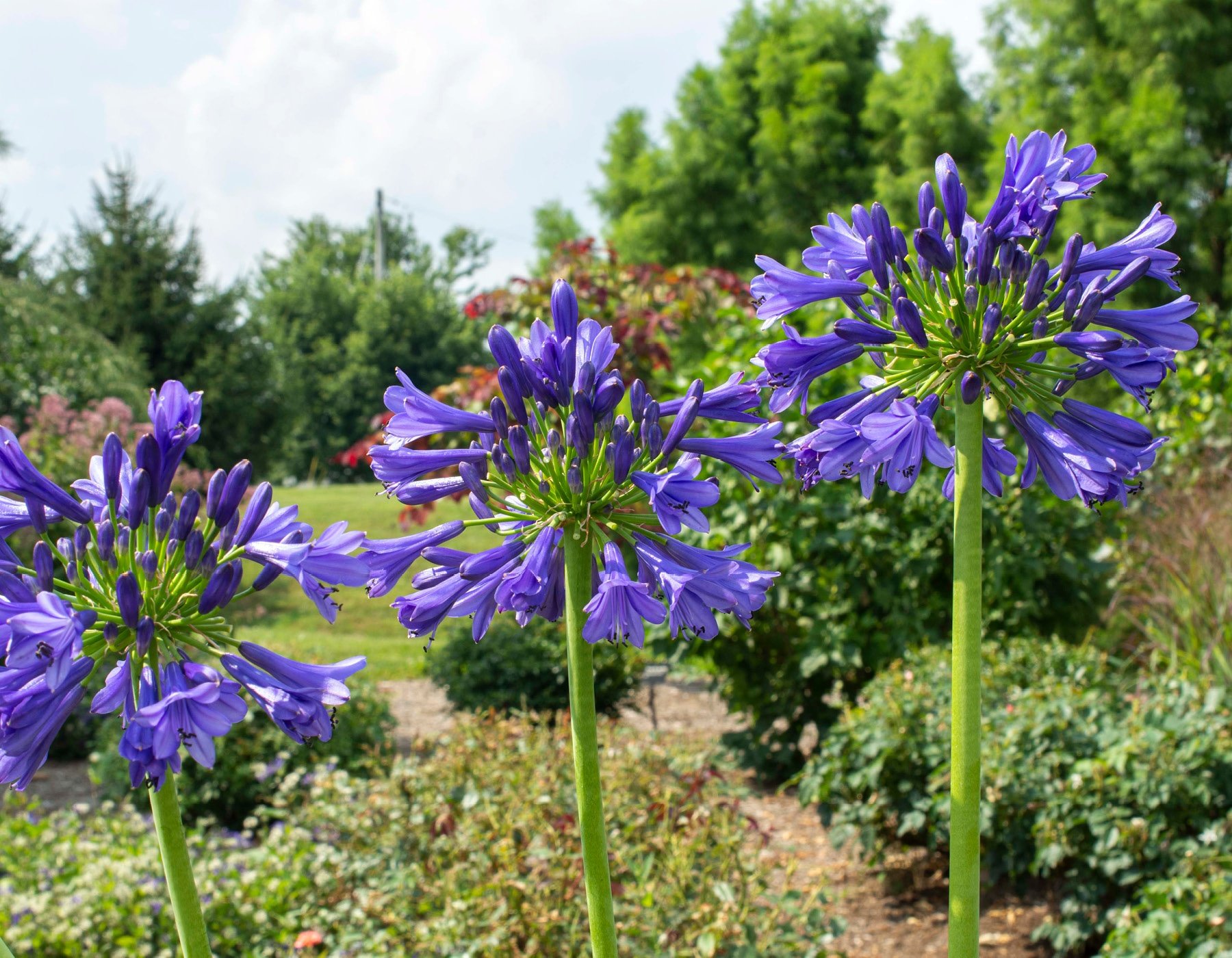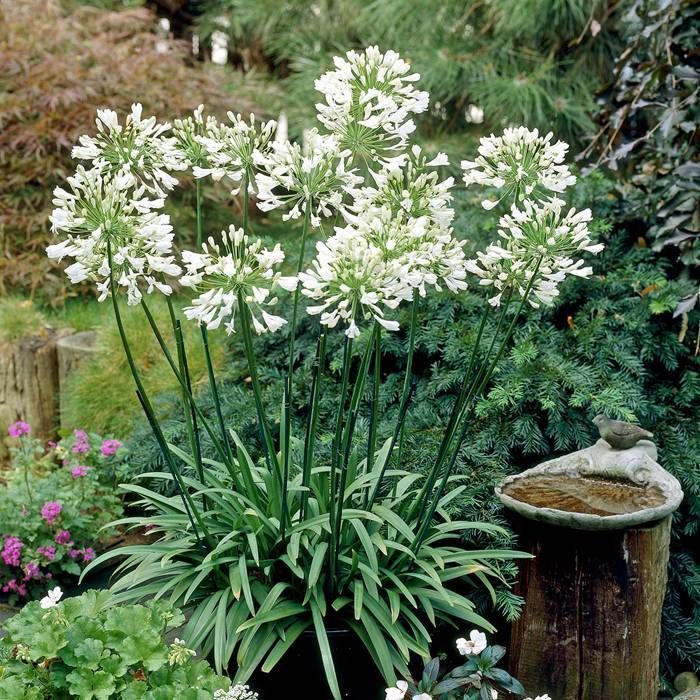Agapanthus Propagation: Tips for Expanding Your Plant Collection
Agapanthus Propagation: Tips for Expanding Your Plant Collection
Blog Article
Understanding the Art of Agapanthus Care: Important Steps for Healthy Growth and Lively Blooms
In the world of cultivation, the farming of agapanthus stands as a fulfilling endeavor for those who seek to support these stylish flowering plants. With their striking blooms and stylish vegetation, agapanthus has actually caught the interest of gardeners worldwide. Nevertheless, accomplishing optimum growth and vibrant blooms needs a nuanced strategy that incorporates various crucial steps. From selecting the ideal selection to grasping pruning strategies, the trip towards growing prospering agapanthus plants is diverse and holds the crucial to unlocking the full possibility of these botanical gems.

Selecting the Right Agapanthus Variety

When selecting the right Agapanthus variety for your garden, take into consideration factors such as environment suitability, blossom color, and growth routine. Furthermore, consider the climate in your area to make certain the Agapanthus range you choose can flourish in your particular conditions. Understanding the development practice of various Agapanthus selections is crucial for appropriate placement within your garden.
Suitable Planting Problems
Taking into consideration the ideal ecological demands is necessary for successful Agapanthus farming. Agapanthus flourishes in well-draining dirt with a slightly acidic to neutral pH level. When growing, select a place that receives complete sunshine to partial color. In hotter environments, offering some mid-day color can prevent scorching of the leaves. Agapanthus plants are sensitive to cool temperatures and must be protected from frost during cold weather.
To make sure healthy and balanced development and lively flowers, plant Agapanthus light bulbs at a deepness of concerning 2-4 inches and area them 8-12 inches apart. Mulching around the base of the plants helps retain wetness and suppresses weed development.
Watering and Fertilizing Tips
Maintaining appropriate wetness degrees and providing important nutrients are crucial elements in the treatment regimen for Agapanthus plants. It is vital to strike an equilibrium when it comes to sprinkling Agapanthus. These plants choose continually moist soil but are susceptible to root rot if overwatered. Throughout the growing season, water deeply when a week, guaranteeing the soil is well-draining to avoid waterlogging. In hotter environments or throughout durations of dry spell, even more regular watering might be needed to keep the dirt equally moist. Nonetheless, decrease watering in the winter months to stop waterlogged problems.
Fertilizing Agapanthus is necessary for promoting healthy development and respected blossoms. Apply a balanced find more plant food, such as a 10-10-10 formula, in the very early springtime as new development arises. Repeat this application every 6-8 weeks throughout the growing season. Prevent extreme fertilizing, as it can bring about lavish foliage at the expense of flowers. Always comply with the maker's directions for proper dilution and application methods. By adhering to these watering and feeding ideas, you can ensure your Agapanthus plants thrive and create lively, durable flowers.
Pruning Methods for Agapanthus
Trimming Agapanthus plants at the appropriate times and with appropriate techniques is vital for keeping their health and wellness and advertising optimum growth and blooming. The optimal time to trim Agapanthus remains in late winter months or very early spring before new growth arises. Begin by eliminating any type of yellowing or dead fallen leaves near the base of the plant. Cut them as short as possible without damaging the emerging shoots.
Deadheading invested blossoms can also reroute browse around this web-site the plant's energy right into generating even more flowers rather than establishing seeds. If you desire to look at this website collect seeds for breeding, leave some flowers to fully grown and dry on the plant.
Bear in mind to use clean, sharp tools to make accurate cuts and lower the danger of presenting diseases. Agapanthus. Routine pruning will aid maintain your Agapanthus looking healthy and cool while guaranteeing an abundant display screen of beautiful blossoms
Dealing With Common Parasites and Conditions
After guaranteeing appropriate pruning methods for Agapanthus, it is crucial to deal with common insects and diseases that can impact the health and wellness and vigor of these plants. One typical insect that affects Agapanthus is the Agapanthus gall midge.
In addition, Agapanthus plants can experience from root rot if they are planted in inadequately draining soil. By being alert and taking timely action against illness and pests, you can aid your Agapanthus plants thrive and create dynamic blooms. Agapanthus.

Verdict
To conclude, mastering the art of agapanthus treatment entails picking the right selection, offering ideal growing problems, appropriate watering and fertilizing, suitable pruning methods, and dealing with usual bugs and illness. By adhering to these vital actions, you can ensure healthy development and vivid blooms for your agapanthus plants. Remember to on a regular basis monitor and preserve your plants to advertise their general wellness and durability.
To make certain healthy development and lively blossoms, plant Agapanthus bulbs at a depth of regarding 2-4 inches and space them 8-12 inches apart. By following these watering and fertilizing pointers, you can guarantee your Agapanthus plants flourish and create vivid, resilient blossoms.
One typical parasite that impacts Agapanthus is the Agapanthus gall midge. Additionally, Agapanthus plants can endure from root rot if they are grown in poorly draining pipes dirt. By adhering to these necessary steps, you can make certain healthy development and vivid blooms for your agapanthus plants.
Report this page